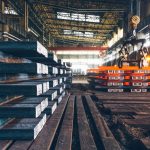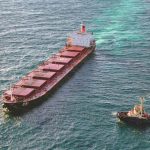South Korea’s top three shipbuilders are expected to report collective annual profits for 2024, marking the first time in 13 years that the trio—HD Korea Shipbuilding & Offshore Engineering, Hanwha Ocean, and Samsung Heavy Industries—have all turned a profit.
The achievement comes amid a “super cycle” in the global shipbuilding industry, fueled by high-value vessel orders, rising ship prices, and favorable exchange rates.
Record-Setting Performances
HD Korea Shipbuilding, a subsidiary of HD Hyundai, is projected to post a 407.9% surge in operating profit, reaching 1.43 trillion won ($1.1 billion), with revenue increasing 19.4% to 25.4 trillion won.
The company’s focus on high-value ships, such as ammonia and LPG carriers, drove the growth, accounting for 50 of the 181 vessels ordered last year.
Hanwha Ocean, formerly Daewoo Shipbuilding & Marine Engineering, is forecasted to swing to a profit for the first time since 2020, with operating income reaching 169.1 billion won ($126 million) and a 40.9% jump in revenue to 10.4 trillion won. However, the lingering effects of a 51-day labor strike in 2022 limited the scale of its recovery.
Samsung Heavy Industries, which returned to profitability in 2023 after nine years of losses, is expected to see its operating profit more than double to 472.1 billion won ($353 million), with revenue climbing 23.3% to 9.8 trillion won. The company is on track to meet its 2024 targets of 9.7 trillion won in revenue and 400 billion won in operating profit.
Industry Dynamics and Economic Tailwinds
The profitability surge is attributed to increased demand for ships, particularly high-value vessels, and a near four-year rise in newbuilding prices.
According to the Korea Shipbuilding & Offshore Engineering Association, South Korea’s 2024 order volume grew 9.1% year-over-year to 10.98 million compensated gross tons (CGT), while ship completions rose 22.1%, the highest rate among major shipbuilding nations.
The Clarkson Newbuilding Price Index hit 189.2 in December, approaching its all-time high of 191.5, further boosting margins. Additionally, the industry benefited from favorable exchange rates, with payments for shipbuilding contracts typically made in U.S. dollars.
Outlook and Challenges
Analysts predict the boom will continue into 2025, bolstered by rising demand for LNG and LPG carriers. The incoming second Trump administration in the United States is expected to prioritize traditional energy industries, further driving demand for such vessels.
Opportunities are also anticipated in maintenance, repair, and overhaul (MRO) services, which have been identified as a key area for U.S.-Korea collaboration.
Despite the optimistic outlook, experts caution against complacency.
“This profitability is largely driven by external factors such as environmental policies, high exchange rates, and geopolitical issues like the Red Sea crisis,” said Lee Shin-hyung, a professor of naval architecture at Seoul National University. “The industry must focus on securing future growth drivers rather than relying on the current boom.”
As South Korea’s shipbuilders capitalize on favorable conditions, the challenge will be to sustain growth through innovation and resilience in an unpredictable global market.
Source: KoreaBizwire






